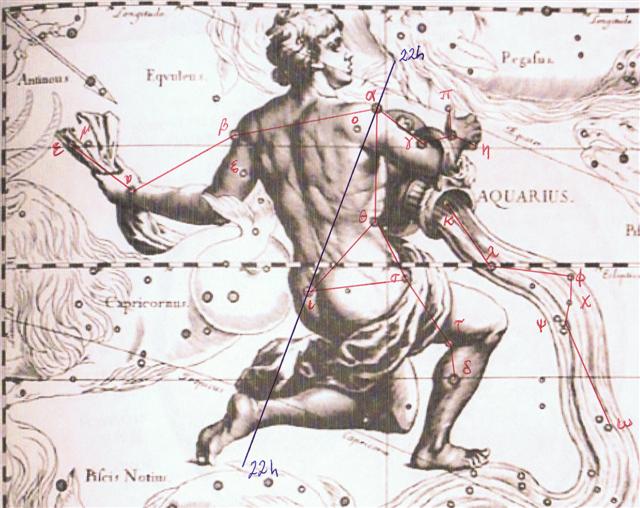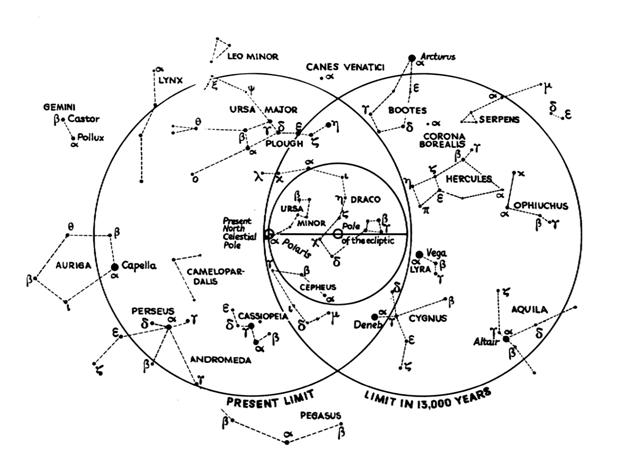Sirius ought to have
been the primary
reason for the name
'Foundation' for the
Persian Bunda
lunar station in
Aquarius (at his
left shoulder according
to Hevelius):
... β and ξ also constituted the Persian lunar station Bunda and the similar Coptic Upuineuti, the Foundation ...
Sirius culminated at midnight when Bunda rose heliacally:
Sirius is the brightest star in the night and this most brilliant of stars was also peculiarly connected to the Sun: ... The Sothic cycle was based on what is referred to in technical jargon as 'the periodic return of the heliacal rising of Sirius', which is the first appearance of this star after a seasonal absence, rising at dawn just ahead of the sun in the eastern portion of the sky. In the case of Sirius the interval between one such rising and the next amounts to exactly 365.25 days - a mathematically harmonious figure, uncomplicated by further decimal points, which is just twelve minutes longer than the duration of the solar year ... "The ancient Egyptian civil year was 365 days long, and apparently did not have any intercalary days added to keep it in alignment with the Sothic year, a kind of sidereal year. Normally, a sidereal year is considered to be 365.25636 days long, but that only applies to stars on the ecliptic, or the apparent path of the Sun. Because Sirius lies ~40˚ below the ecliptic, the wobbling of the celestial equator and hence of the horizon at the latitude of Egypt, as well as the proper motion of the star, causes the Sothic year to be slightly smaller. Indeed, it is almost exactly 365.25 days long, the average number of days in a Julian year." (Wikipedia) At the other side of the sky compared to the midnight culmination of Sirius was the midnight culmination of Vega, another very bright star with special significance: ... Mons Maenalus, at the feet of Bo÷tes, was formed by Hevelius, and published in his Firmamentum Sobiescianum; this title coinciding with those of neighboring stellar groups bearing Arcadian names. It is sometimes, although incorrectly, given as Mons Menelaus, - perhaps, as Smyth suggested, after the Alexandrian astronomer referred to by Ptolemy and Plutarch. The Germans know it as the Berg Menalus; and the Italians as Menalo. Landseer has a striking representation of the Husbandsman, as he styles Bo÷tes, with sickle and staff, standing on this constellation figure. A possible explanation of its origin may be found in what Hewitt writes in his Essays on the Ruling Races of Prehistoric Times: The Sun-god thence climbed up the mother-mountain of the Kushika race as the constellation Hercules, who is depicted in the old traditional pictorial astronomy as climbing painfully up the hill to reach the constellation of the Tortoise, now called Lyra, and thus attain the polar star Vega, which was the polar star from 10000 to 8000 B.C. May not this modern companion constellation, Mons Maenalus, be from a recollection of this early Hindu conception of our Hercules transferred to the adjacent Bootes?
I therefore intend to look back in time to see where Sirius and Vega were anciently. In rongorongo times my data are:
| |||||||||||||||||||||||||||||||||||||||||||||||||||||||||||||||||||||||||||



